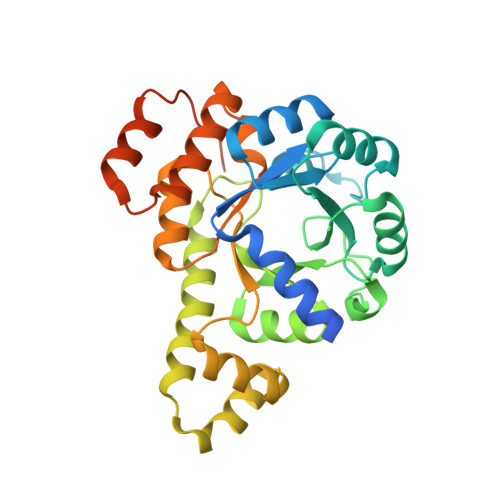Lysine relay mechanism coordinates intermediate transfer in vitamin B6 biosynthesis.
Rodrigues, M.J., Windeisen, V., Zhang, Y., Guedez, G., Weber, S., Strohmeier, M., Hanes, J.W., Royant, A., Evans, G., Sinning, I., Ealick, S.E., Begley, T.P., Tews, I.(2017) Nat Chem Biol 13: 290-294
- PubMed: 28092359
- DOI: https://doi.org/10.1038/nchembio.2273
- Primary Citation of Related Structures:
5LNR, 5LNS, 5LNT, 5LNU, 5LNV, 5LNW - PubMed Abstract:
Substrate channeling has emerged as a common mechanism for enzymatic intermediate transfer. A conspicuous gap in knowledge concerns the use of covalent lysine imines in the transfer of carbonyl-group-containing intermediates, despite their wideuse in enzymatic catalysis. Here we show how imine chemistry operates in the transfer of covalent intermediates in pyridoxal 5'-phosphate biosynthesis by the Arabidopsis thaliana enzyme Pdx1. An initial ribose 5-phosphate lysine imine is converted to the chromophoric I 320 intermediate, simultaneously bound to two lysine residues and partially vacating the active site, which creates space for glyceraldehyde 3-phosphate to bind. Crystal structures show how substrate binding, catalysis and shuttling are coupled to conformational changes around strand β6 of the Pdx1 (βα) 8 -barrel. The dual-specificity active site and imine relay mechanism for migration of carbonyl intermediates provide elegant solutions to the challenge of coordinating a complex sequence of reactions that follow a path of over 20 Å between substrate- and product-binding sites.
Organizational Affiliation:
Biological Sciences, University of Southampton, Southampton, UK.


















